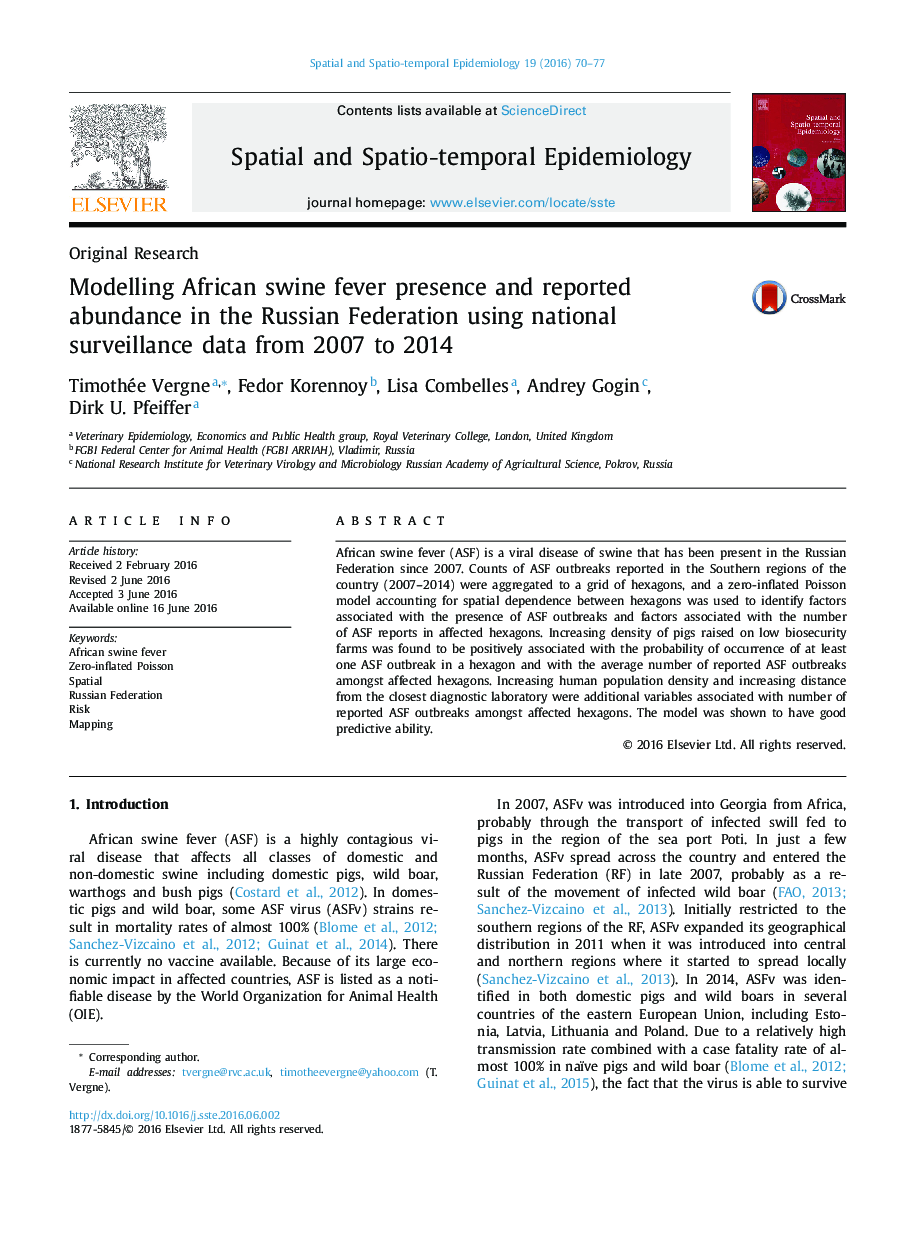| Article ID | Journal | Published Year | Pages | File Type |
|---|---|---|---|---|
| 5118956 | Spatial and Spatio-temporal Epidemiology | 2016 | 8 Pages |
African swine fever (ASF) is a viral disease of swine that has been present in the Russian Federation since 2007. Counts of ASF outbreaks reported in the Southern regions of the country (2007-2014) were aggregated to a grid of hexagons, and a zero-inflated Poisson model accounting for spatial dependence between hexagons was used to identify factors associated with the presence of ASF outbreaks and factors associated with the number of ASF reports in affected hexagons. Increasing density of pigs raised on low biosecurity farms was found to be positively associated with the probability of occurrence of at least one ASF outbreak in a hexagon and with the average number of reported ASF outbreaks amongst affected hexagons. Increasing human population density and increasing distance from the closest diagnostic laboratory were additional variables associated with number of reported ASF outbreaks amongst affected hexagons. The model was shown to have good predictive ability.
